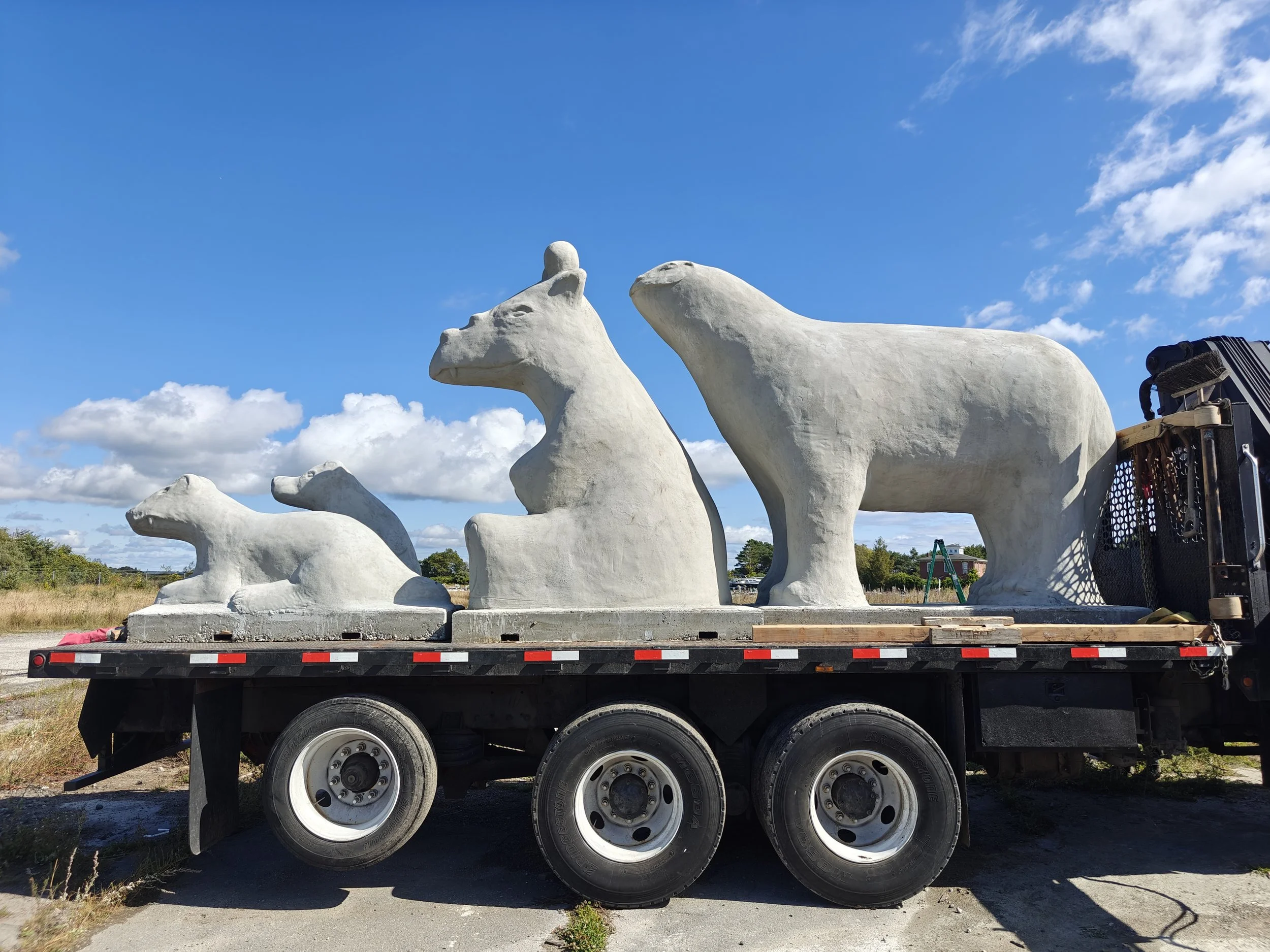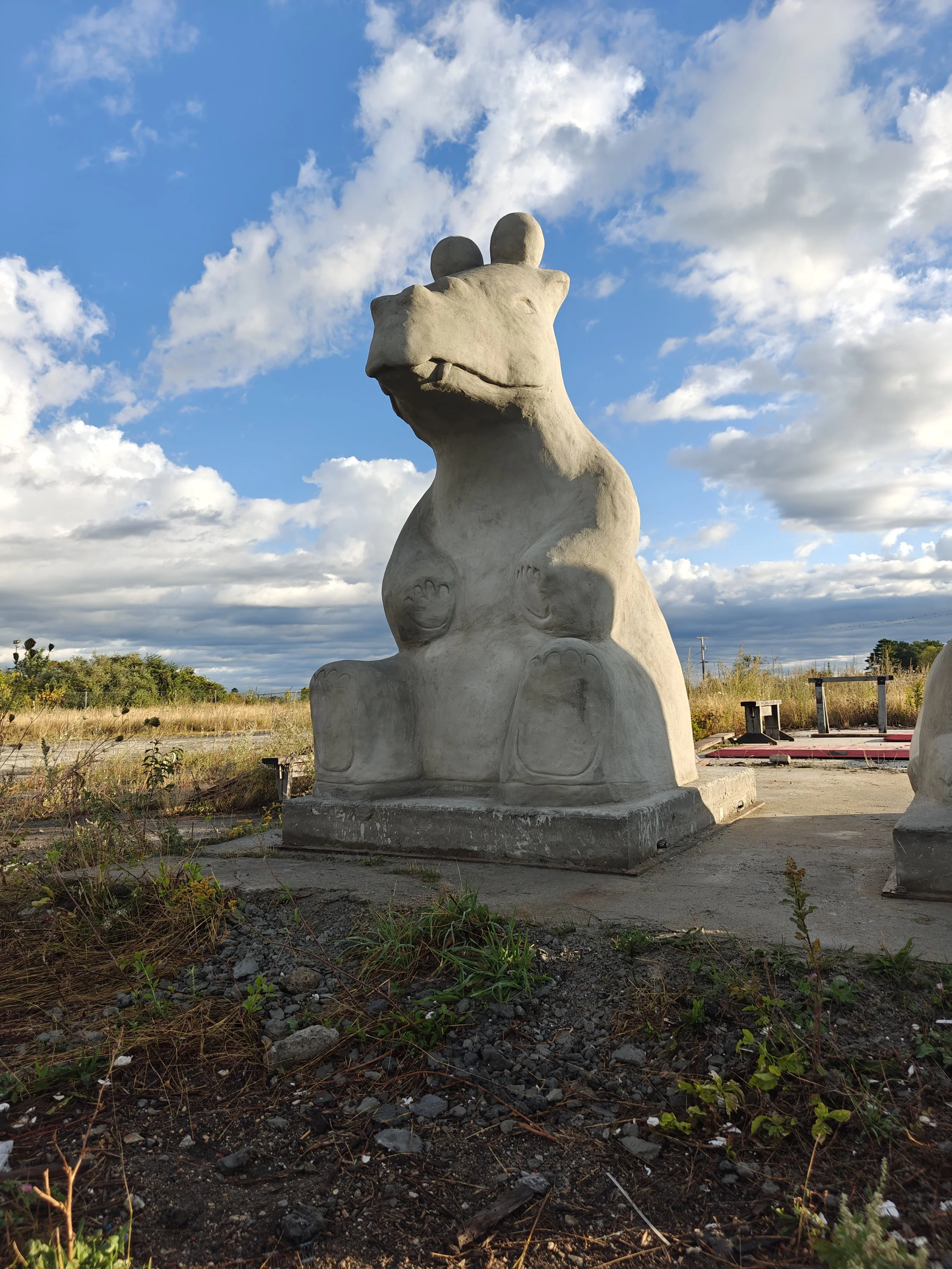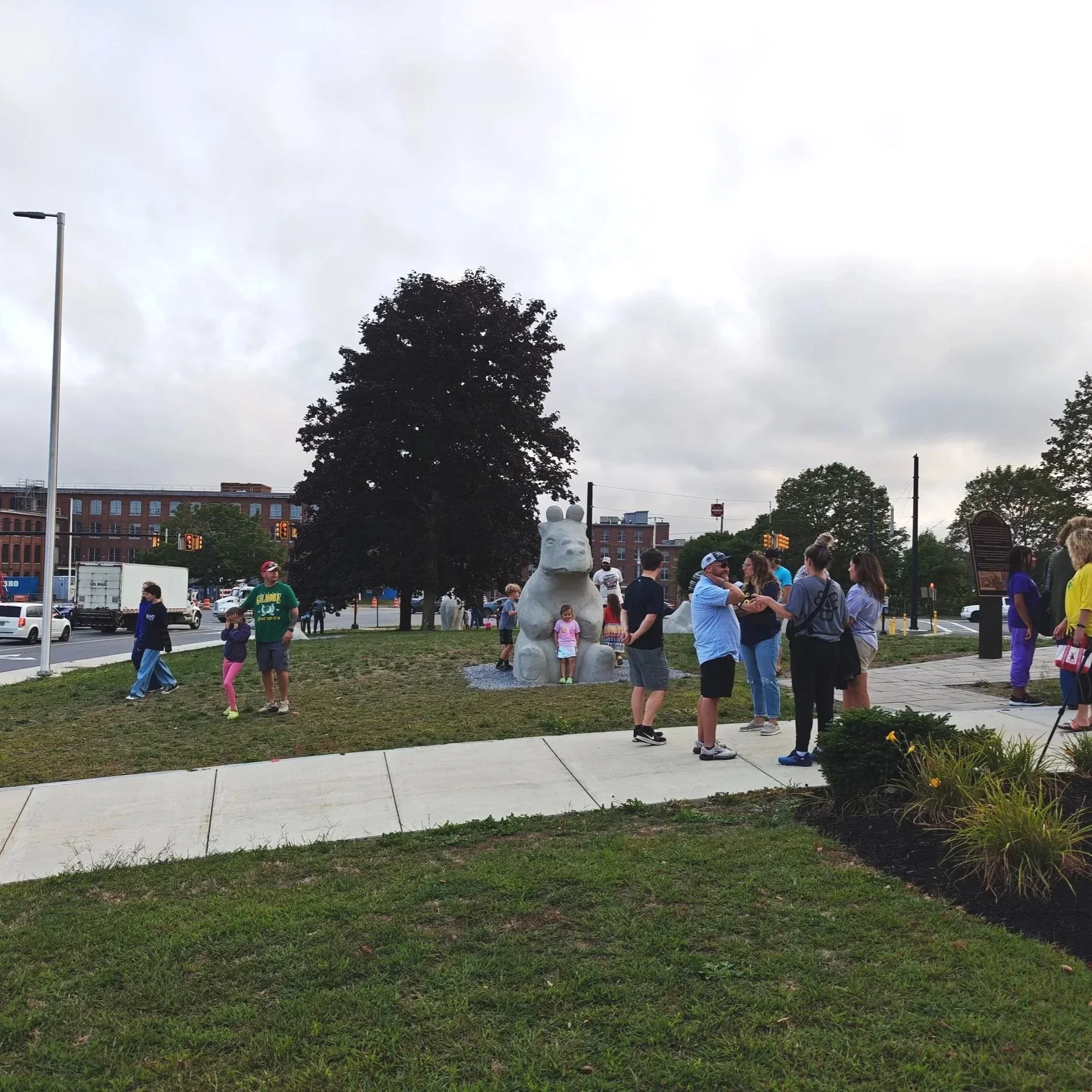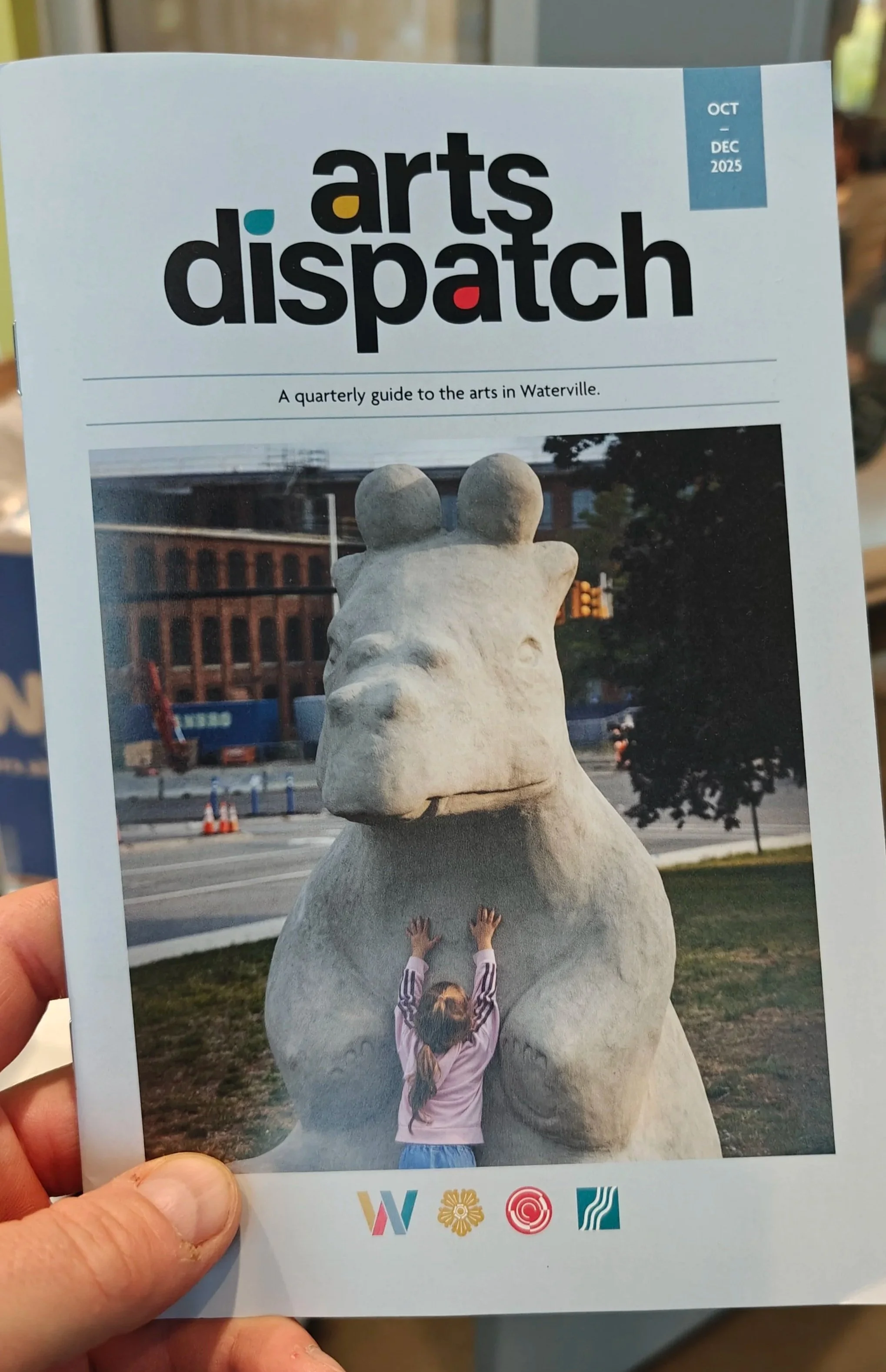Wild Maybes of the Long Green Between
Commissioned by Waterville Creates in partnership with the City of Waterville, ME. 2025
These Wild Maybes are visitors from an ancient Earth, as remote and unknowable as the far future.
That is why they are stationed here as honorary crossing guards, where the deep past and the far future meet.
You can roam here too if you like, among the Wild Maybes, in the richness and vastness of time beyond reckoning.
This is Una, short for Uintatherium-Maybeus.
This is Eo, Eoconodon.
This is Coryphodon-Maybeus, or Cory for short.
This is Barry — Barylambda-Maybeus.
And this could be you I suppose, roaming among them.
The Wild Maybes were commissioned in 2025 by Waterville Creates in partnership with the city of Waterville.
WHY WILD MAYBES?
These wild maybes are visitors from an ancient Earth, as remote and unknowable as the far future.
They are inspired by real ancient mammals that lived just after the age of dinosaurs. For one reason or another, few fossils from their time were preserved here. These creatures were from the general neighborhood of North America. We can say that they lived within walking distance once, though it may have been a long walk.
Did they once roam this place where you are standing right now?
MAYBE.
Few things about them are certain at all, based on shaky assumptions about dusty old bones. Sometimes in the world of paleontology, what first seemed like a snout-horn turns out to be a thumb-claw (1)
Did such creatures then, if they roamed here, hunt in fearsome packs? Did they graze in vast herds in the open, or lead solitary, secretive lives in the forest? Were they fossorial animals like the rabbit and the badger, digging for roots and grubs? Did they rear up and stretch their necks to browse for tender twigs and juicy leaves, like the deer and the giraffe? Were they semi-aquatic perhaps, like the muskrat, the mink or the hippopotamus – or merely strong swimmers, like the jaguar and the moose?
Were they surprising in other ways entirely... like the skunk?
MAYBE.
Each of those maybes is a puzzle of it’s own, about one fascinating creature in its fascinating home. Considered all together as one great and unsolvable tangle of mystery, small maybes grow bigger and wilder to reach awe-inspiring proportions. They bring to mind the tireless adaptability of life on Earth – and its vastness and richness though time beyond reckoning.
In that vastness of time that transforms everything, eventually – in the far, far, far future – could such strange creatures roam this place again?
MAYBE.
That is why they are stationed here as honorary crossing guards, where the deep past and the far future meet.
During the century and more that Levine’s Store stood nearby, uncounted people, horses, trolleys and trucks passed this busy place. Tall mountains, vast glaciers and deep oceans rose and fell here too, long ago. Now every single day just a few yards to the East, the arc of the sun from the morning to the evening crosses the flow of the mighty Kennebec. How about that?
When 2.8 billion seconds ago (in 1934), historian Lewis Mumford pronounced that “...the clock, not the steam engine, is the key-machine of the modern industrial age”, he went on to point out that there are still many other ways to mark time, and surely better ways to experience it. (2) This long, narrow strip of grass, for instance, is a between place. It is the perfect kind of place to escape from the kind of time that is measured in seconds and minutes. Here in this long green between, time flows in seasons and eons, in eras and generations.
You can roam here too if you like, among the wild maybes, in the vastness and richness of time beyond reckoning.





























